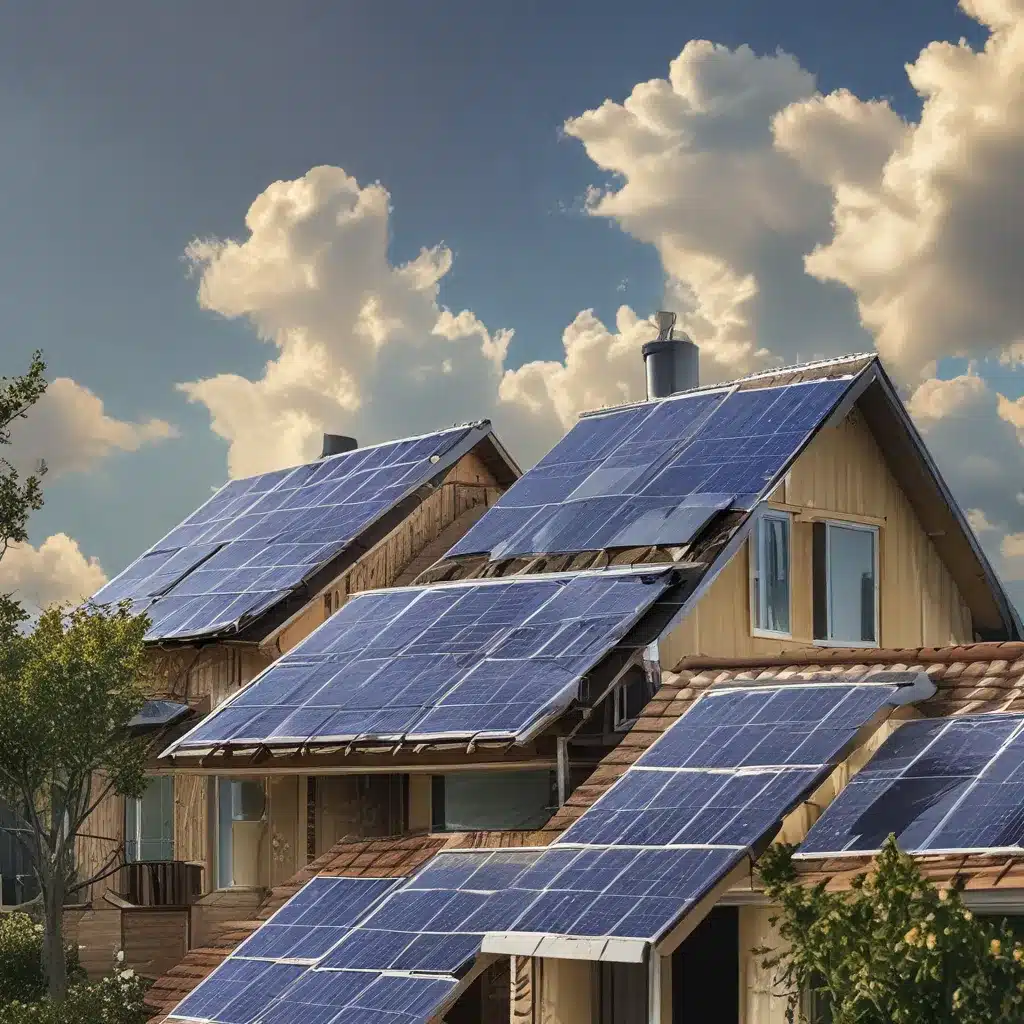
Ditch the Dinosaurs, Embrace the Sun
Are you tired of feeling like the Earth is slowly becoming a hotbed of environmental disaster? Do you long for a future where your carbon footprint is as small as a mouse’s paw print? Well, my friend, the solution might just be closer than you think – and it’s as bright as the sun itself.
As someone who’s always been passionate about sustainability, I’ve been on a mission to reduce my impact on the planet. And let me tell you, discovering the power of solar energy has been a total game-changer. It’s not just about saving the environment – it’s about taking control of your energy needs and shrinking your carbon footprint in the most practical and cost-effective way possible.
The Sunny Side of Sustainability
Think about it – the sun has been providing us with free, renewable energy for, oh, I don’t know, the entire history of our planet. And yet, we’ve spent centuries relying on fossil fuels, those ancient, dirty dinosaur remains that are slowly but surely destroying our home. But not anymore. Solar power is here to save the day, and it’s never been more accessible or affordable.
In fact, according to the United Nations, solar energy technologies represent one of the “least carbon-intensive means of electricity generation.” And the best part? Solar power produces zero emissions during its operation. That’s right, folks – no more guilt-tripping every time you flip on the lights or charge your phone.
The Rise of the Sun-Powered Superheroes
But the benefits of solar energy don’t stop there. As the UN article points out, the global photovoltaic (PV) sector has been growing at an average of over 40% in the last eight years, with manufacturing over 2,200 megawatts in 2006 alone. And the trend shows no signs of slowing down.
Countries like Germany, Japan, and the United States have been leading the charge, providing market support programs to drive down the costs of solar technology. And as a result, we’re seeing a classic “experience curve” decline in manufacturing prices – for every doubling in cumulative production, prices come down by about one-fifth. According to the UN, solar modules are now selling globally for $3 to $5 per watt, while installed systems are generally sold at between $6 and $10 per watt.
The Sunny Solution to Climate Change
But the real kicker? Solar energy is the cheapest option for providing power to locations more than half a mile from existing electricity, and it’s generally competitive without subsidies in regions with high energy prices. The PV industry is striving to reduce system costs by 50% by 2015, at which point solar power will be cost-competitive with retail electricity costs in most of the United States and other developed countries.
As the UN article so eloquently puts it, “As PV technology becomes increasingly affordable and available, its potential as a major source of low-carbon energy grows.” In fact, a 2004 report by Greenpeace and the European Photovoltaic Industry Association (EPIA) estimated that by 2020, PV could provide 276 terawatt-hours (TWh) of energy – equivalent to 1% of the global demand projected by the International Energy Agency (IEA).
Harnessing the Power of the Sun
But wait, there’s more! Solar energy isn’t just about electricity generation. Concentrating solar power (CSP) plants are utility-scale generators that produce electricity by using mirrors or lenses to efficiently concentrate the sun’s energy. According to the UN article, life-cycle assessments of CSP systems show that they are “ideally suited to reduce greenhouse gases (GHG) and other pollutants without creating other environmental risks or contamination.”
And the best part? The energy payback time of CSP systems is approximately five months, which compares very favorably with their lifespan of 25 to 30 years. That means that these systems can produce clean, renewable energy for decades to come, all while slashing your carbon footprint and reducing your reliance on those pesky fossil fuels.
The Solar Saviors of Darfur
But solar energy’s impact isn’t just felt in the developed world. In fact, it’s been a literal lifesaver for the refugees of Darfur, who have been facing a devastating humanitarian crisis for years. As the UN article explains, the simple task of cooking a meal posed serious risks for the displaced citizens of Darfur, as they had to venture outside the refugee camps to gather scarce firewood, where they were vulnerable to attacks by the Janjaweed militia.
But then, the Solar Cooker Project stepped in, introducing simple, affordable solar cookers to the Iridimi refugee camp in Chad. These ingenious devices, made from cardboard or other local materials, use the power of the sun to cook food, reducing the need for firewood by a staggering 50 to 80 percent. And the best part? The project has trained over 4,500 women and supplied 10,000 cookers to the refugees, all while providing economic opportunities and reducing the risk of attacks on women and girls.
Harnessing the Sun’s Potential
As you can see, the potential of solar energy is truly boundless. Whether it’s powering our homes, providing clean electricity to remote regions, or even saving lives in refugee camps, this renewable resource is a shining example of how we can take control of our environmental impact and create a brighter, more sustainable future.
And the best part? You don’t have to be a solar energy expert to start making a difference. By making simple changes to your daily life, like switching to LED lightbulbs, insulating your home, or even installing a few solar panels, you can be a part of the solar revolution and help shrink your carbon footprint one ray of sunshine at a time.
So why not take the first step towards a cleaner, greener future and explore the possibilities of solar energy with Solar As Systems Inc.? With their expertise and dedication to sustainable solutions, you can be well on your way to becoming a solar-powered superhero and making a real difference for our planet.


